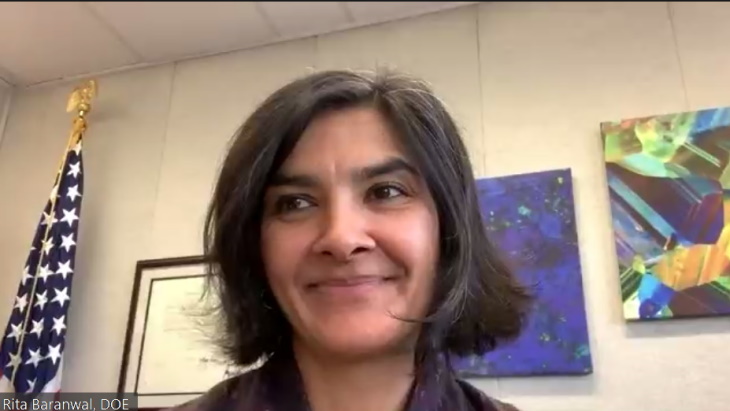Speaking during a 'Webchat' event hosted by the OECD Nuclear Energy Agency (NEA) today, US Assistant Secretary for the Office of Nuclear Energy Rita Baranwal said the Advanced Reactor Demonstration Program (ADRP) will focus on "actual" construction and follows on from last month's release by the US Administration of the Nuclear Fuel Working Group’s Strategy to Restore American Nuclear Energy Leadership, which recommends continued support for the demonstration of US advanced reactor technology.
"My office has taken action on that by launching the Advanced Reactor Demonstration Program ", Baranwal said, adding that this will concentrate resources on advanced reactors that are "affordable" to build and operate. "This programme is going to require a sustained technical and financial commitment to achieve these very aggressive goals," she said.
The DOE aims to make the funding awards by the end of 2020. "What we're hoping for is that we're going to have, not a singular company, but a team of entities - developer, end-user, supply chain companies as well - involved in these proposals. It's a very exciting time," she told NEA Director General William Magwood.
Applicants can receive support through three different development and demonstration pathways: advanced reactor demonstrations, which are expected to lead to a fully functional advanced nuclear reactor within seven years of the award; risk reduction for future demonstrations, which will support up to five additional teams resolving technical, operational and regulatory challenges to prepare for future demonstration opportunities; and Advanced Reactor Concepts 2020 (ARC 20), which will support innovative and diverse designs with the potential to be commercial in the mid-2030s.
ARDP will also leverage the National Reactor Innovation Center (NRIC) to test and assess ARD technologies. NRIC, which is located at the Idaho National Laboratory, was launched last year to develop the DOE's Gateway for Accelerated Innovation in Nuclear (GAIN) initiative, which connects industry with the US national laboratories to accelerate the development and commercialisation of advanced nuclear technologies. It provides private sector developers access to US national laboratory assets and infrastructure to support the testing and demonstration of reactor concepts and assess their performance, helping accelerate licensing and commercialisation.
Separately, the DOE yesterday announced USD27 million in funding for nine projects as part of the Advanced Research Projects Agency-Energy's (ARPA-E) Generating Electricity Managed by Intelligent Nuclear Assets (GEMINA) programme. These projects will work to develop digital twin technology to reduce operation and maintenance costs in the next generation of nuclear power plants, using technologies that are driving efficiencies across other industries, such as artificial intelligence, advanced control systems, predictive maintenance and model-based fault detection.
The recipients selected to receive the GEMINA grants are: Argonne National Laboratory; Electric Power Research Institute, Inc; Framatome, Inc; GE Research; Massachusetts Institute of Technology (two projects); Moltex Energy USA, LLC; University of Michigan; and X-energy, LLC. Awards range in value from USD809,701 to USD6 million.






_63865.jpg)
_18570.jpg)
_16159.jpg)





